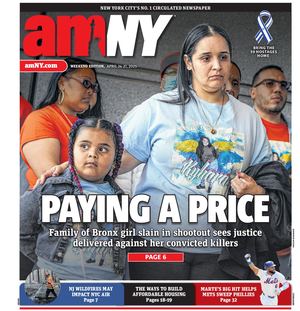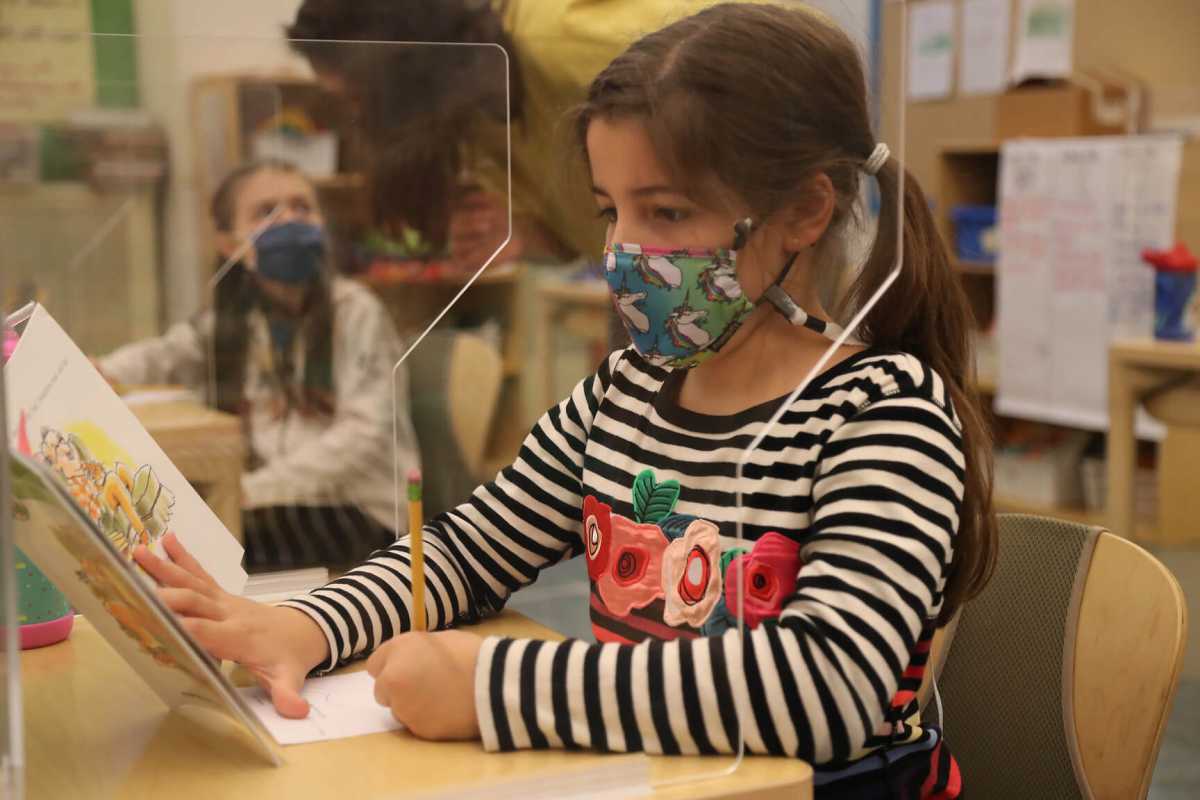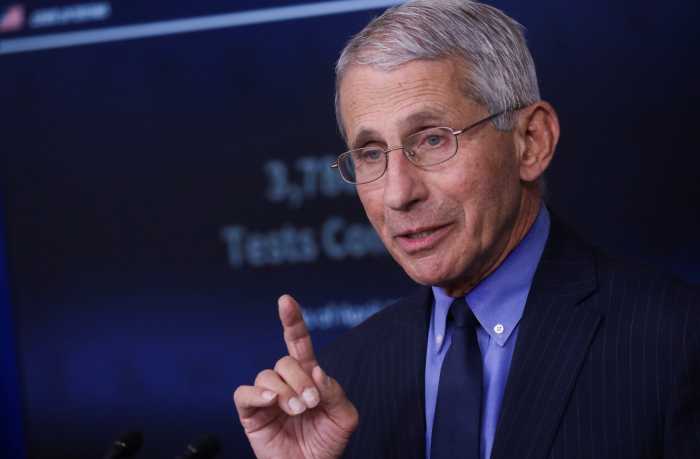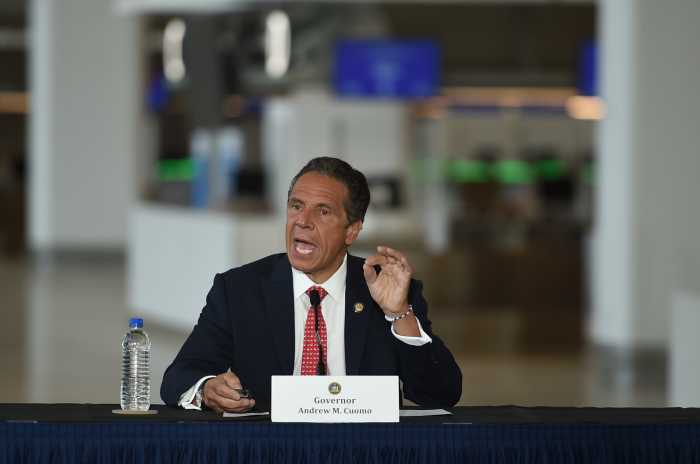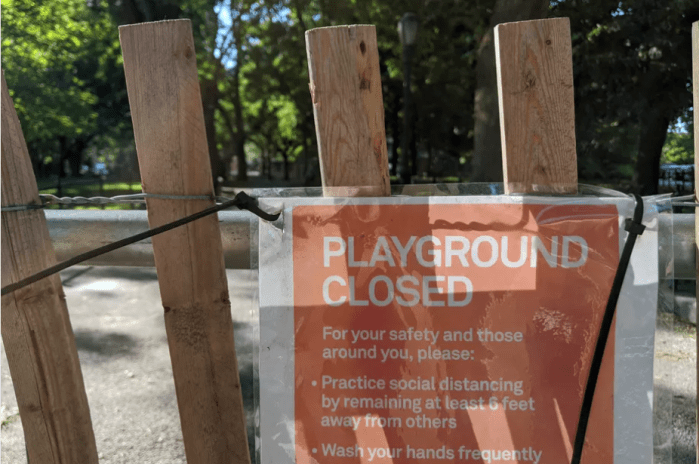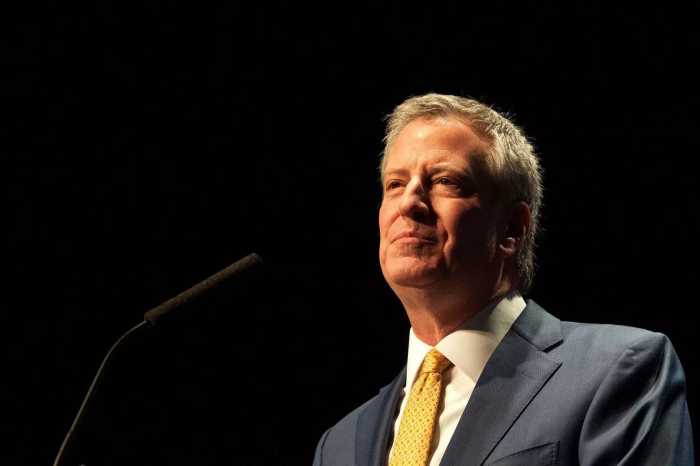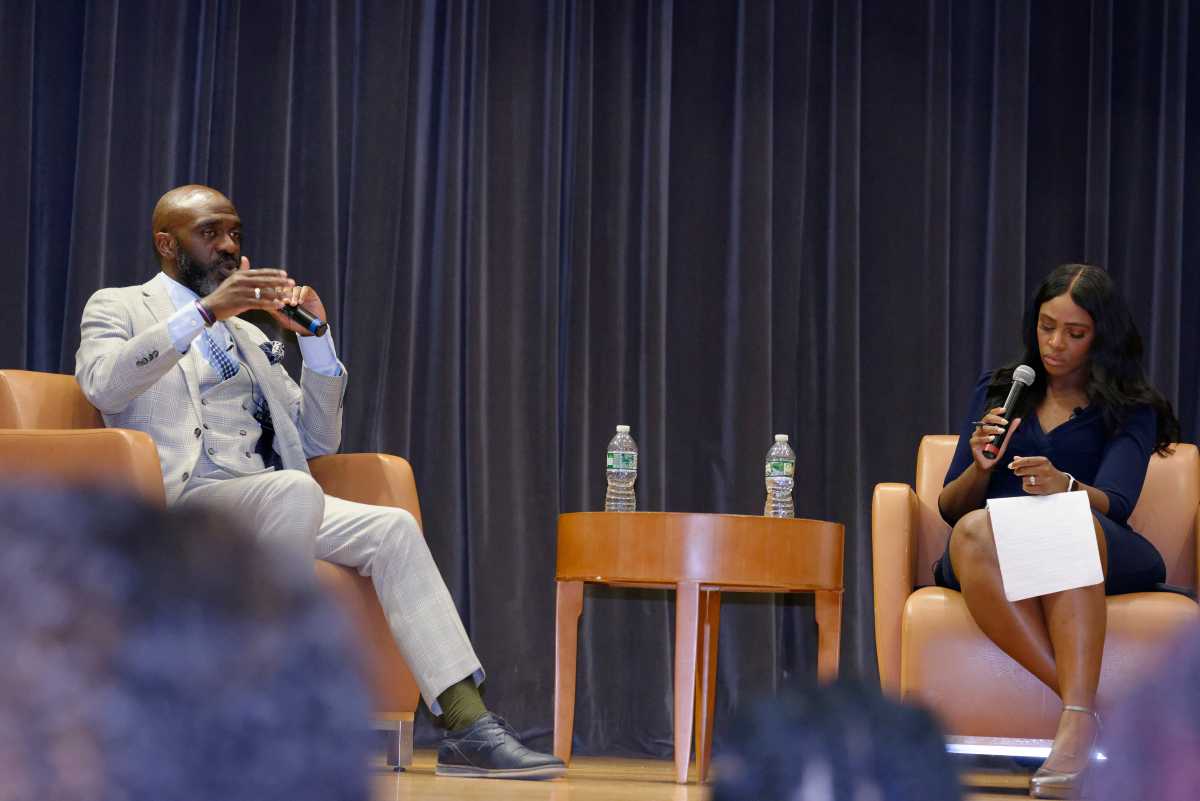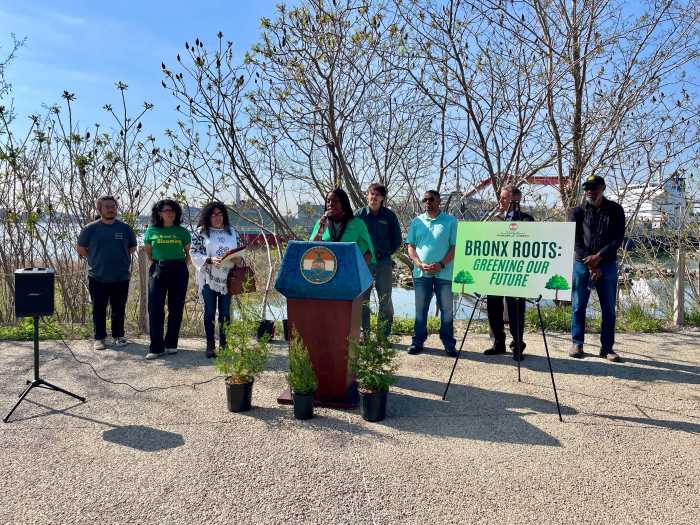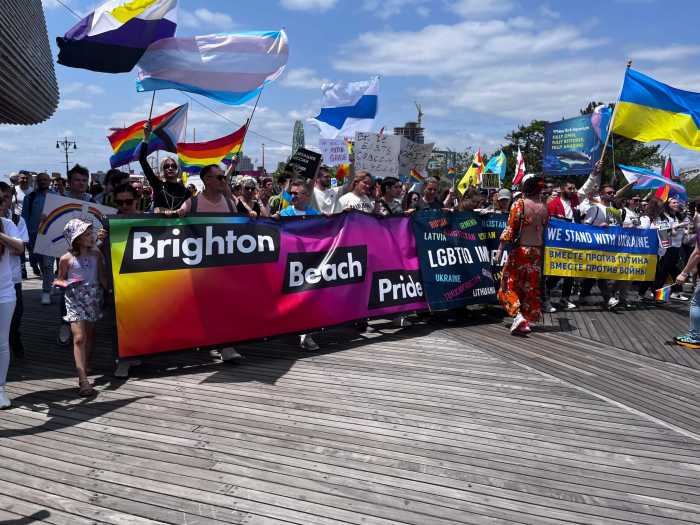Like other educators across the world, Crissy Cáceres, head of school at the historic Brooklyn Friends School, faced a daunting challenge last spring of charting out a plan to reopen school in September amid the COVID-19 pandemic.
It all boiled down to one question: How could the school provide the best educational experience possible to their students while keeping them safe — and connected to their peers and teachers?
“We are a highly relational, close-knit, intimate school body, and so for me, it was really important that we considered social distancing. It’s physical distancing, but our social connectivity needed to remain in tact,” Cáceres said.
To help develop that plan (which evolved into three “reopening roadmaps” phased in through the school year), Cáceres conducted a massive amount of research — including participating in more than 100 webinars, conversing with fellow educators across the world and talking with legal analysts.
In order to adjust to strict CDC guidelines, the school had to redesign their approach four separate times during the 14-week period. With lots of preparation and determination throughout its reopening, Brooklyn Friends kept its COVID-19 positivity rate under 1% for the entirety of the Fall 2020 semester.
Additionally, more than 90% of the student body has participated in in-person instruction since September.
Roadmap to reopen
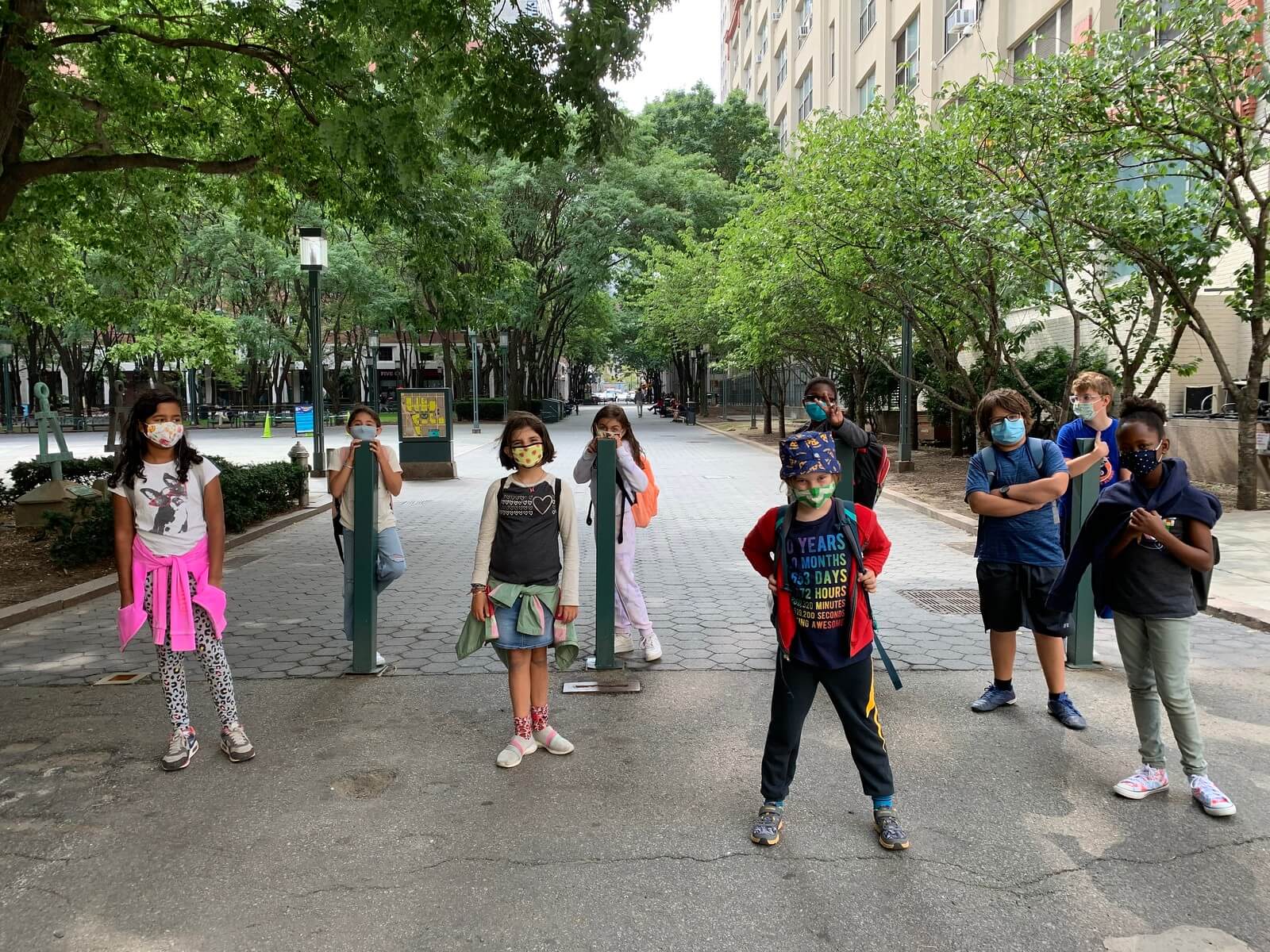
After closing in March, the school released its “Reopening Roadmap 1” in July, announcing the plan to return to in-person school in September. A month later, a second reopening guide was issued with further details and modifications. The school reopened on Sept. 14 with a series of “new normals.”
Cáceres said the school went to great pains to keep everyone — students and staff alike — safe from the pandemic while maintaining a comfortable environment for learning. The school used every inch of available class space possible within its campus to properly distance students. Desks were equipped with plexiglass dividers within established pods of students to help limit physical interaction.
Hybrid schedules were made for the students so that both in-person and remote learners could feel comfortable in their learning environment. While implementing these “new normals,” the BFS administration made sure to remain consistent and adaptable to the needs of their students.
All facilities were cautiously prepared against the virus. Modifications to air dilution, air filters, and HVAC systems were put in place to help with fresh air flow. Changes were made to room densities and circulation strategies in order to allow for physical distancing. The school’s protocols regarding hygiene, cleaning, screening, and testing were also instrumental in the reopening.
Brooklyn Friends also instituted a “comprehensive, all-school testing protocol” every week, Cáceres said, and it worked to great success. The COVID-19 positivity rate at Brooklyn Friends never went beyond 0.08% of the community the entire year.
“We’ve never had beyond one or two positive tests. Oftentimes, we’ve had no positives at all,” she said.
The school says it has fully enforced its mask mandate for students. BFS has provided constant communication with its community, giving parents the chance to breathe easy and know that their children are in good hands.
Working together
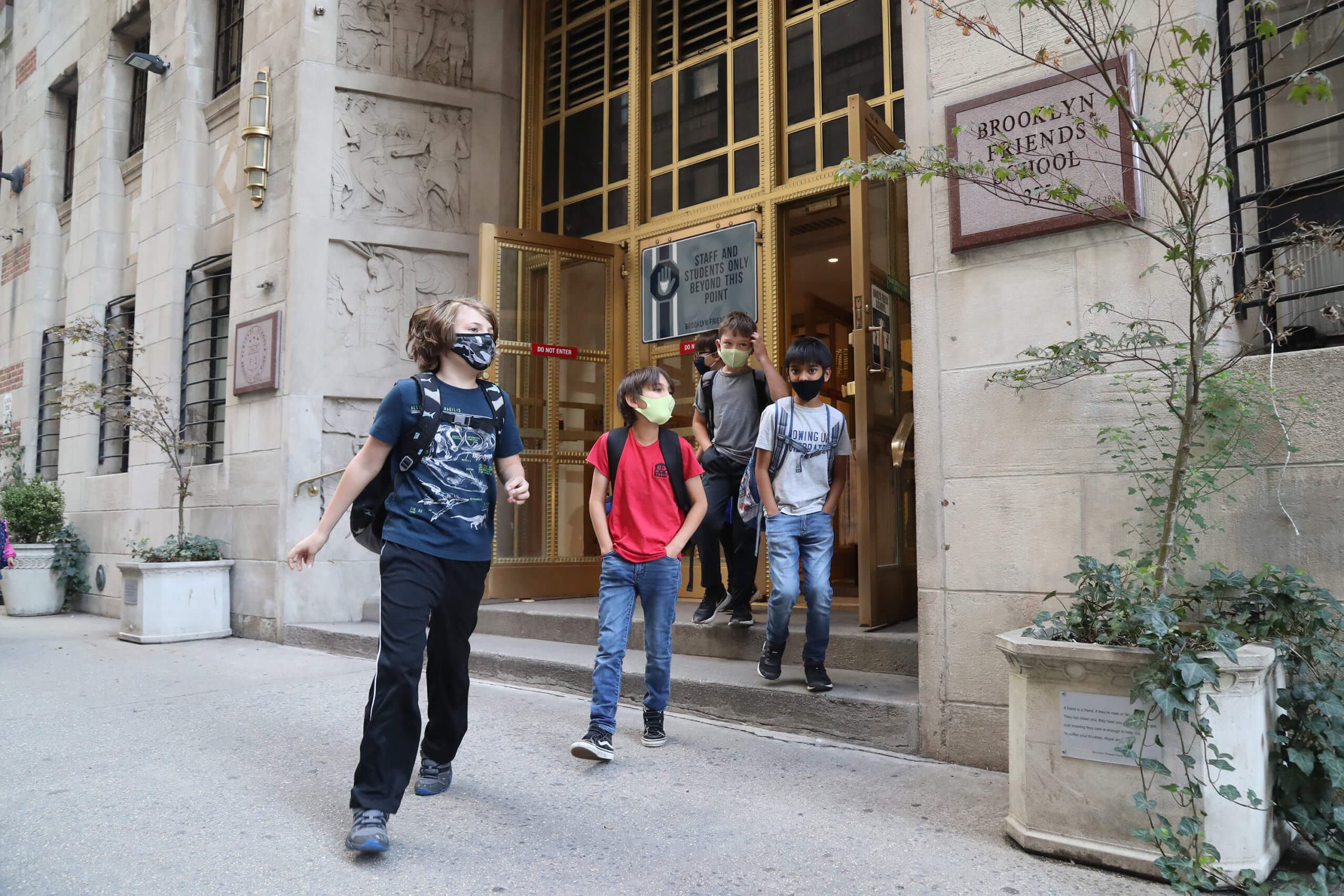
The ambitious plan sparked some anxiety among returning teachers at Brooklyn Friends at the start of the school year in September, according to Cáceres. But it didn’t take long for those anxieties to give way to enthusiasm and excitement among teachers and students at being back in school.
“I felt a rush of cautious excitement being back in-person with the children,” said preschool teacher Camille Fobbs. “The very first day sticks out to me — our students came in two groups to start and there was a level of comfort, wonder, nervousness, and an eagerness on the students’ faces because some of them were new and some were returning after the abrupt end to being in-person last March.”
Additionally, a new arrival and departure process was put into place, as well as a “community covenant.” The covenant, Cáceres said, helped cultivate an environment of care within the entire school community that has kept students attending school while avoiding the virus.
She pointed, as one example, to the success of Brooklyn Friends’ high school program — which has in-person classes twice a week. By contrast, New York City public high school students have not been involved in in-person classes since November.
Cáceres said the community covenant instilled an importance among the student body “that what you do outside of school safeguards your friends inside of school.”
“As we can see from the testing, which there has only been one instance in which a high school student has tested positive, it’s shown us that they are listening and recognizing that their actions have an impact on others,” she said.
Many of the school’s parents had faith that Brooklyn Friends would be properly prepared to protect students and staff alike.
“For some reason, I was not completely surprised when it was announced that the school would open safely,” said Alex Tavantzis, BFS Parent. “We never were nervous. We applauded the school for its willingness to take on calculated risks, and we trusted the school implicitly.”
“It has been such a relief to know that the teachers, staff, and administration of Brooklyn Friends School have all worked tirelessly to prioritize the health, well-being, and in-person education of our two daughters, enabling our family not only to cope but even to thrive in the midst of a crisis,” added BFS Parent Meredith Martin.
Keeping the students happy
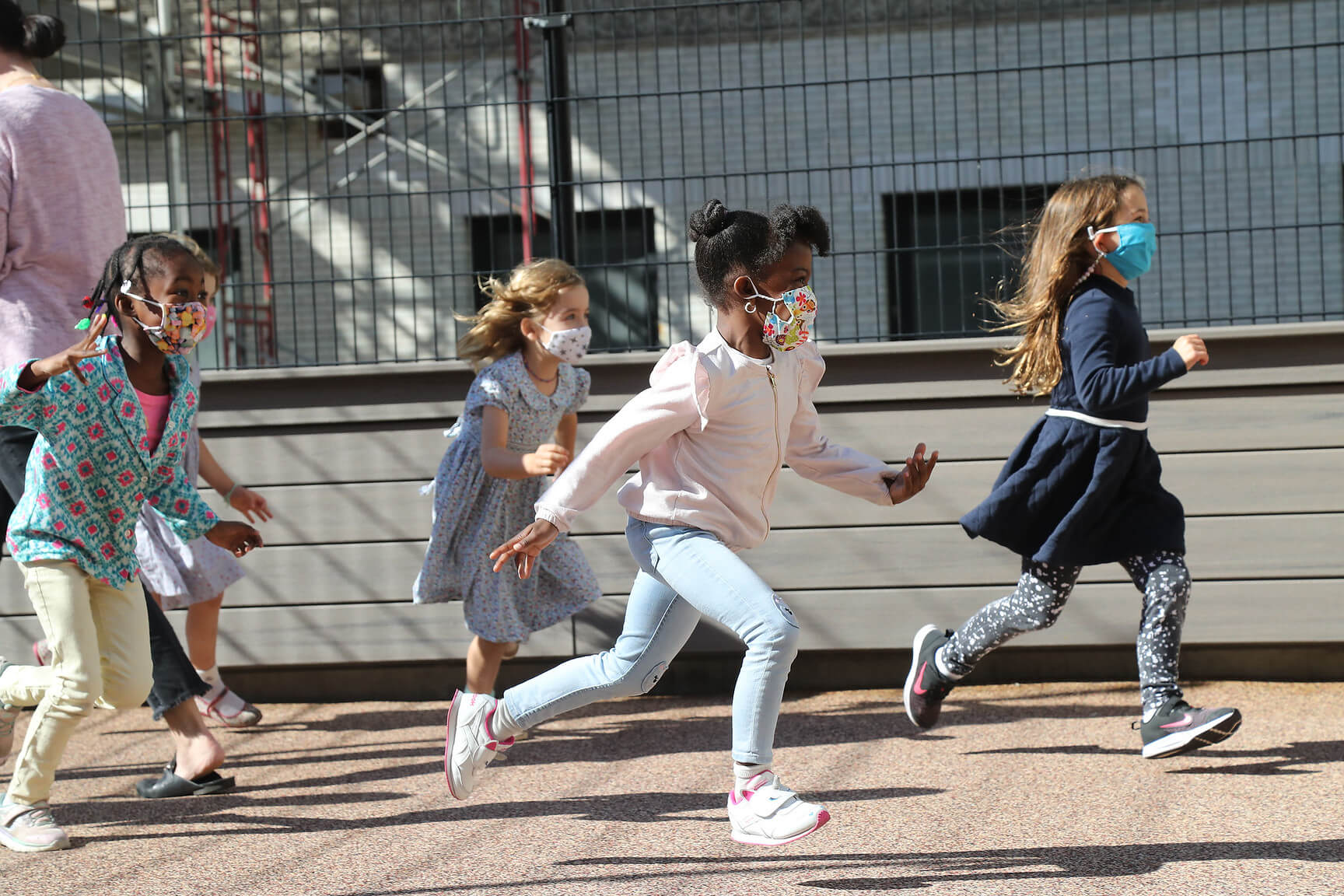
Most importantly, the Brooklyn Friends School children are happy and thriving.
“In the context of school, children often meet the high expectations and rise to a new level of independence, self-regulation and conscientiousness,” said BFS Parent Lily Thom, PHD, Licensed Clinical Psychologist. “The opportunity to be at school in-person this year has meant they don’t miss out on these crucial opportunities to foster their independence and sense of self. I can see that after weeks of being in school, they grow, thrive and are so much more confident in themselves. It is heart-breaking that so many kids are missing out on this kind of development during COVID.”
Fobbs agreed, noting the importance of having children be around their peers to help keep their social and emotional development strong.
“A classroom is a small community where the skills of communication, taking turns, getting to know others outside of one’s family, sharing stories, and understanding various perspectives are honed and nurtured,” she said.
As for school beyond the pandemic, Cáceres said the experience provided the opportunity for Brooklyn Friends to become more innovative and try new ideas to foster learning. That includes providing virtual music and art classes as well as online events, such as a recent Black History Month trivia night that drew scores of participants from all over the country.
“We’ve learned that the school is ready for new experiences,” she said. “I view this as being our time to dream of what’s possible at a moment when we didn’t have a footprint. I know there are things we have done that we will continue moving forward because they have punctuated what is just and good for our children.”
For more information on the school, visit the BFS website, brooklynfriends.org.
